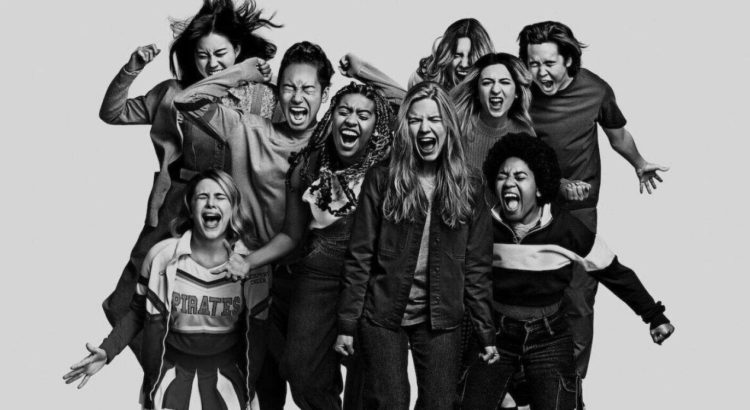Moxie, directed by Amy Poehler, is a Netflix film about 16-year-old Vivian and her feminist awakening when she opens her eyes to the misogynistic culture of her high school. Vivian finds her mom’s old collection of ‘90s feminist punk zines and decides to make her own, anonymously printing copies and putting them in the school bathrooms. A cult following then amasses–a small group of girls get together to start taking larger action against sexism and gender inequality at their school.
I may have came in expecting too much from the film. I’ll try my best to judge it as the lighthearted teen dramedy it was meant to be, but I have to criticize Moxie for its ambitiousness and subsequent shortcomings.
Overall, Moxie felt like it was trying too hard to be too many things, and the end result was a messy and underwhelming teen rom-com. Too often I felt the issues being touched on in the film were important, but not given enough attention or screen time. Moxie tries to cover heavy topics like sexism, racism, transgender issues, sexual assault, and immigrant issues, along with mother-daughter conflict and healthy teenage relationships, all while tossing in a bit of barely-there LGBTQ+ representation and disability representation.

While I’m happy that this film had representation of so many different identities and experiences, it was disappointing to see so many opportunities for nuanced coverage of these diverse topics disappear in the shadow of Vivian’s coming-of-age plot. As an important but unfortunate example, new student Lucy, a Black girl, is the one who inspires Vivian’s budding feminism by standing up against a sexist teacher and the aggressive school jock. However, Lucy and the other women of color in the Moxie group are basically relegated to the role of one-dimensional inspiration and backup for Vivian, while Vivan, a white girl, gets the privilege of a plot exploring the complexity of her budding political self, family life, young love, and teenage angst–which we don’t even truly get to invest in, because there’s simply not enough time to dive into character development with everything Moxie tried to squeeze into 2 hours.
Amy Poehler’s character, Vivian’s mom, makes a brief reference to the lack of intersectionality in the feminist movement back in her day as a ‘90s riot grrrl. Moxie also fails to fully be the feminism power statement it could be. I feel there simply wasn’t enough time in a feature film to cover intersectionality and discuss why and how misogyny affects women of color, or trans women, or disabled women, differently. And that there had seemingly been no push against the terribly misogynistic culture in the school before Vivian’s spontaneous feminist push is doubtful–but that’s all I’ll say about that.
As someone who was in the high school scene just a few years ago (though it seems longer), I will say I probably would have been inspired by this film as a 16-year-old. I saw some of my own Gen-Z high school struggles portrayed in Moxie, and I think Moxie is definitely more positive than other YA media that was being released in my teenage years (ex. 13 Reasons Why). I think Moxie was made in good intent, it just didn’t live up to its potential. Perhaps as a full Netflix series, Moxie could have been a lot more.
Moxie was a cute modern-age girl-power flick, but it sure wasn’t anything groundbreaking or monumental. Worth the watch if you’re looking for something light–but don’t expect more than, as NYT’s Jeannette Catsoulis puts it, “a CliffsNotes guide to fighting the patriarchy.”


